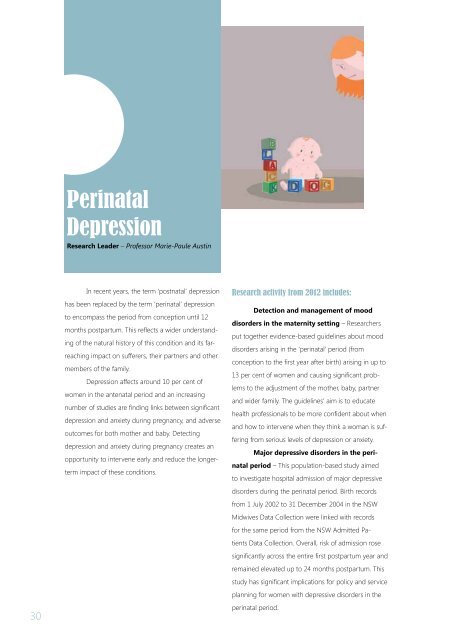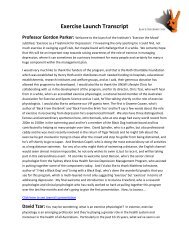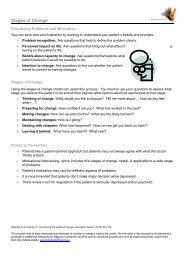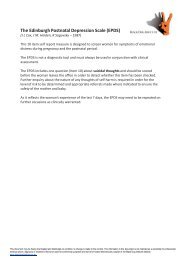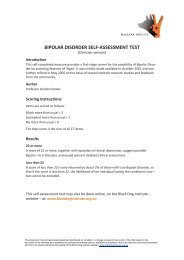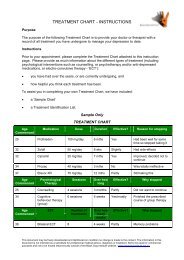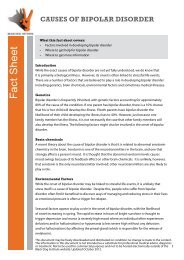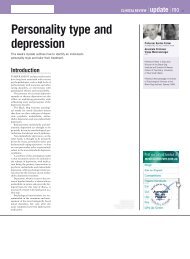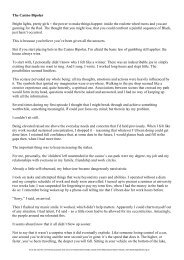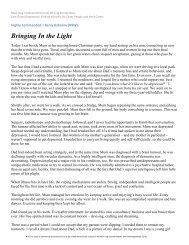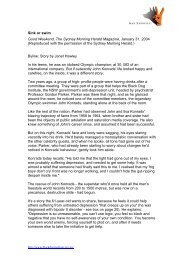Download a PDF of the 2012 Annual Report - Black Dog Institute
Download a PDF of the 2012 Annual Report - Black Dog Institute
Download a PDF of the 2012 Annual Report - Black Dog Institute
Create successful ePaper yourself
Turn your PDF publications into a flip-book with our unique Google optimized e-Paper software.
PerinatalDepressionResearch Leader – Pr<strong>of</strong>essor Marie-Paule Austin30In recent years, <strong>the</strong> term ‘postnatal’ depressionhas been replaced by <strong>the</strong> term ‘perinatal’ depressionto encompass <strong>the</strong> period from conception until 12months postpartum. This reflects a wider understanding<strong>of</strong> <strong>the</strong> natural history <strong>of</strong> this condition and its farreachingimpact on sufferers, <strong>the</strong>ir partners and o<strong>the</strong>rmembers <strong>of</strong> <strong>the</strong> family.Depression affects around 10 per cent <strong>of</strong>women in <strong>the</strong> antenatal period and an increasingnumber <strong>of</strong> studies are finding links between significantdepression and anxiety during pregnancy, and adverseoutcomes for both mo<strong>the</strong>r and baby. Detectingdepression and anxiety during pregnancy creates anopportunity to intervene early and reduce <strong>the</strong> longertermimpact <strong>of</strong> <strong>the</strong>se conditions.Research activity from <strong>2012</strong> includes:Detection and management <strong>of</strong> mooddisorders in <strong>the</strong> maternity setting – Researchersput toge<strong>the</strong>r evidence-based guidelines about mooddisorders arising in <strong>the</strong> ‘perinatal’ period (fromconception to <strong>the</strong> first year after birth) arising in up to13 per cent <strong>of</strong> women and causing significant problemsto <strong>the</strong> adjustment <strong>of</strong> <strong>the</strong> mo<strong>the</strong>r, baby, partnerand wider family. The guidelines’ aim is to educatehealth pr<strong>of</strong>essionals to be more confident about whenand how to intervene when <strong>the</strong>y think a woman is sufferingfrom serious levels <strong>of</strong> depression or anxiety.Major depressive disorders in <strong>the</strong> perinatalperiod – This population-based study aimedto investigate hospital admission <strong>of</strong> major depressivedisorders during <strong>the</strong> perinatal period. Birth recordsfrom 1 July 2002 to 31 December 2004 in <strong>the</strong> NSWMidwives Data Collection were linked with recordsfor <strong>the</strong> same period from <strong>the</strong> NSW Admitted PatientsData Collection. Overall, risk <strong>of</strong> admission rosesignificantly across <strong>the</strong> entire first postpartum year andremained elevated up to 24 months postpartum. Thisstudy has significant implications for policy and serviceplanning for women with depressive disorders in <strong>the</strong>perinatal period.


